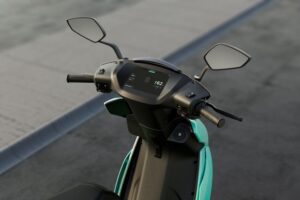Electric motorcycles are no longer just a futuristic concept — they’re quickly becoming a dominant force in the motorcycle industry. Advancements in battery technology, charging infrastructure, and performance have made electric bikes a compelling alternative to traditional gas-powered models. Whether you’re a casual rider or a performance enthusiast, the growing lineup of electric motorcycles offers something for everyone. And if you’re looking for a gift for a racing fan, NASCAR gifts for dad provide a thrilling way to share the excitement of the track.
1. Improved Battery Technology and Longer Range
One of the biggest barriers to electric motorcycle adoption has been limited battery range. However, recent advancements in lithium-ion battery technology have significantly increased range and charging speeds. Models like the Zero SR/F and Harley-Davidson LiveWire now offer ranges exceeding 150 miles on a single charge, making them viable for long-distance touring.
Battery charging times have also improved with the expansion of DC fast-charging networks. Many electric motorcycles can now reach 80% charge in under an hour, reducing downtime during long trips.
2. Performance on Par with Gas-Powered Bikes
Electric motorcycles have a significant advantage when it comes to performance. Unlike gas-powered engines, which require time to build up power, electric motors deliver instant torque. This results in rapid acceleration and smooth power delivery.
The Energica Ego, for example, produces 145 horsepower and 159 lb-ft of torque, enabling it to accelerate from 0 to 60 mph in under 3 seconds. The lack of a traditional gearbox also contributes to a more responsive and simplified riding experience.
- Growing Lineup of Models and Styles

Early electric motorcycles were limited to sportbike-style designs, but manufacturers have diversified their offerings. Today, you can find electric cruisers, adventure bikes, dirt bikes, and even touring models.
- Zero Motorcycles leads the market with a range of street and dual-sport models.
- Harley-Davidson’s LiveWire targets the cruiser market with a distinctive design and premium build quality.
- Energica focuses on high-performance electric sportbikes with race-derived technology.
- Smaller manufacturers like Cake and Sur-Ron are gaining traction in the off-road and urban mobility segments.
4. Environmental and Cost Benefits
Electric motorcycles produce zero tailpipe emissions, contributing to improved air quality and reduced carbon footprint. They are also more energy-efficient than gas-powered bikes, converting over 90% of electrical energy into usable power.
Maintenance costs are lower for electric motorcycles since they have fewer moving parts. There’s no need for oil changes, spark plugs, or exhaust maintenance. Regenerative braking also reduces brake wear, extending the lifespan of components.
5. Challenges Facing the Electric Motorcycle Industry
Despite the rapid growth of electric motorcycles, the industry still faces several challenges:
- Initial Cost: Electric motorcycles remain more expensive than comparable gas-powered models due to battery costs.
- Charging Infrastructure: While fast-charging networks are expanding, they are not yet as widespread as gas stations.
- Range Anxiety: Although range has improved, riders often remain concerned about finding charging stations on long trips.
To overcome these challenges, manufacturers are working to develop more affordable models and expand charging infrastructure. Government incentives and tax credits are also helping to make electric motorcycles more accessible.
6. Autonomous and Smart Technology Integration

Electric motorcycles are also at the forefront of smart technology. Many models now feature advanced rider-assistance systems (ARAS) similar to those found in modern cars. These include:
- Adaptive cruise control
- Lane departure warnings
- Blind spot monitoring
- Traction control and anti-lock braking systems (ABS)
Over-the-air (OTA) updates are becoming more common, allowing manufacturers to improve performance and add new features remotely. Tesla’s approach to OTA updates in the electric car market has inspired similar developments in the motorcycle industry.
7. The Influence of Motorsports on Electric Motorcycle Development
Electric motorcycles have made a significant impact on motorsports. The FIM MotoE World Cup, which features electric-only racing bikes, has helped accelerate technological development and showcase the capabilities of electric motorcycles.
Manufacturers like Energica have used race data to improve their consumer models, enhancing battery performance, cooling systems, and handling. High-profile events like the Isle of Man TT Zero have also demonstrated that electric motorcycles can compete with — and even outperform — traditional bikes.
For a deeper look at how electric motorcycles are changing motorsports,visit The New York Times — a trusted source for automotive news and trends.
8. Future Trends and What’s Next
The electric motorcycle market is expected to grow significantly over the next decade. Key trends shaping the future include:
- Solid-State Batteries: Offering higher energy density and faster charging.
- Modular Battery Systems: Allowing riders to swap batteries quickly.
- Lightweight Materials: Improved power-to-weight ratios and enhanced handling.
- Subscription-Based Models: Allowing riders to access high-performance electric motorcycles without large upfront costs.
Governments worldwide are also pushing for increased EV adoption through subsidies and emissions regulations. Europe’s plan to phase out gasoline-powered vehicles by 2035 and similar initiatives in the U.S. and Asia are expected to drive demand for electric motorcycles.
Why Electric Motorcycles Are the Future
Electric motorcycles are no longer just an eco-friendly alternative — they are becoming a mainstream choice for performance, efficiency, and cutting-edge technology. With major manufacturers investing heavily in electric platforms and infrastructure rapidly expanding, the transition to electric motorcycles is well underway.
While traditional gas-powered motorcycles still have a place in the market, the advantages of electric motorcycles in terms of performance, maintenance, and environmental impact make them an increasingly attractive option for both new and experienced riders. The next decade promises even more exciting developments as battery technology and smart features continue to evolve.


